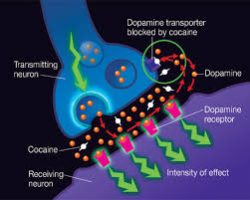There are many ways that being defensive can undermine the quest toward recovery. To do this, many addicts resort to using defense mechanisms that allow him or her to continue with their destructive behaviors. The addiction will convince its victims not to stop any way it can so that the behavior can continue.
Denial of the Addiction
Denial is one of the most popular defense mechanisms among addicts. Many claim they can stop whenever they want to or that they do not have a problem when in reality, the addiction is tearing them down mentally and physically. According to the NCBI, many patients have a grandiose idea of invulnerability and autonomy that can lead to the inability to acknowledge that abuse leads to addiction, which can lead to a loss of independence.
While in denial, the addict begins to lose their relationships, jobs, and self-esteem and despite the need for recovery, they will not get it until something drastic occurs in their lives such as an arrest or hospitalization. If you or a loved one is suffering from substance abuse or addiction, get help today at 800-934-3781(Who Answers?).
Casting Blame for the Addiction

Blaming others for your addiction will keep you from taking any responsibility for your actions.
Many addicts find it hard to take responsibility for their actions and cast blame on someone else. The decision to use was the addicts and no one else is at fault for beginning of the addiction. It is important for the addict to accept responsibility for their actions in order for them to seek recovery treatment.
In order to absolve himself or herself of the responsibility, he or she will blame anyone they can in order to continue their addiction.
Lying to Continue
According to the NIDA, an addict will do anything from lying to physical harm to keep taking their drug even if it means criminal acts. Many addicts will lie in order to go out and get their fix. Not only does this allow the addiction to worsen, but it also breaks the trust he or she has with their family because loved ones will never know if the addict is telling the truth or lying to get their drug of choice.
Many times, loved ones are painfully aware of the lie but do not want to deal with the ramifications of confronting the addict with it, thus delaying their need for treatment.
How Can I Help Someone I Love Begin Cocaine Addiction Treatment?
Rationalization to Use
There are multitudes of excuses the addict can toss out to use their substance of choice. For example, an alcoholic may claim it was necessary to drink at the company Christmas party due to their peers. By rationalizing their use, they can continue to deny that they have a problem and remain oblivious to their need for treatment.
Being defensive can undermine the quest for recovery because it gives the addict an excuse to continue on the path of destruction. Denial, lying, and rationalization allows them to lie to themselves about having a problem with a substance while blaming allows them to put their addiction on someone else without having to place any responsibility on themselves.
The necessary steps such as acknowledgement of the problem and taking the responsibility for their actions are vital steps in the process of recovery and without these actions; he or she will be unable to become sober by seeking out treatment before something drastic occurs.
For immediate help finding a treatment center that can save your life, get help today at 800-934-3781(Who Answers?).
Inpatient care is not always a necessity, and it often depends on the individual and their specific situation as to whether or not a treatment will be beneficial to them. Cocaine withdrawal can often be extremely intense, and in some rare cases, dangerous, so it is important to consider the possibility that residential treatment may be necessary for your detox and recovery.
The Benefits of Inpatient Withdrawal Treatment
According to the Staten Island University Hospital, “Detoxification is a medical service for the removal of alcohol and/or other drug(s) from the body of the patient.” Sometimes, it is necessary for this to be done in an inpatient setting where the patient can be monitored 24-hours a day, be free of the temptation to abuse drugs, and be treated medically for any serious physical or mental disorders associated with their drug abuse.
Inpatient detox centers and other types of inpatient rehab facilities can help patients by putting them in a controlled environment, which is sometimes necessary to recovery. This is often true when an individual is experiencing severe withdrawal symptoms, a strong dependence on a drug, or other possibly harmful issues associated with their drug abuse. Inpatient care can minimize any dangers associated with the decision to stop abusing drugs, especially the likelihood of relapse, and surround the patient with other individuals who want to see them succeed in ending their drug use.
Why Should I Attend Inpatient Treatment for Cocaine Withdrawal?

Inpatient care provides a controlled and safe environment.
Not all individuals need to attend inpatient care for cocaine withdrawal, but this can be necessary––or more helpful––in certain cases. For example, someone who has tried several times to stop abusing cocaine and has attended treatment before without the success they had hoped for might fare better in an inpatient center. This is because they will not be as tempted to abuse cocaine while they are in this more controlled environment, as they will be unable to do so anyway while they are attending treatment.
Other reasons someone experiencing cocaine withdrawal might choose inpatient treatment include:
- Their need to be in a safe environment, especially if their current home is not safe
- Their severe depression, which is often associated with cocaine withdrawal and can cause a “risk of suicide” in many instances (National Library of Medicine)
- Any other mental disorders, which can be treated more safely and effectively in an inpatient facility
- Stimulant-induced psychosis that can linger during the withdrawal period
- Their lack of a strong family or friendship ties at home that keeps them from having the kind of serious support they need and would be able to receive in inpatient care
Those who believe they would feel comfortable in inpatient treatment during cocaine withdrawal should consider the option, but no one treatment is beneficial for every patient. Therefore, it is important for the patient to consider their needs and the severity of their dependence on cocaine before choosing any one type of treatment facility.
Are You Concerned About Undergoing Cocaine Withdrawal?
No matter what kind of treatment option you choose, it will be much safer for you to attend professional treatment of some kind for cocaine withdrawal. Call 800-934-3781(Who Answers?). We can discuss your drug use as well as your personal treatment needs and help you find a program that fits.
The cocaine withdrawal syndrome itself can last a very long time, from six months to two years. This can be incredibly difficult on the user; however, treatment does not necessarily need to last this long. Its main purpose is to minimize the symptoms associated with cocaine dependence and reduce the chance of relapse.
Treating Acute Cocaine Withdrawal
According to the National Library of Medicine, “The level of craving, irritability, delayed depression, and other symptoms produced by cocaine withdrawal rivals or exceeds that felt with other withdrawal syndromes.” This fact, coupled with the length of cocaine withdrawal and the way symptoms often tend to linger, causes an individual to require professional treatment for cocaine withdrawal, either through a doctor’s office, rehab center, or detox clinic.
On the first day of treatment, the individual will often be given a physical examination and certain tests, including blood chemistries, CBC, EKG, and urinalysis. Depending on the severity of the individual’s state, they may be sedated, but this is usually only necessary if the person is experiencing extreme effects caused by stimulant-induced psychosis.
The first few hours and days are spent stabilizing the patient. Depending on the symptoms that are most severe, the individual may require treatment with anticraving agents or neuroleptics. According to the US Department of Veteran Affairs, “Following binge use, individuals may initially experience a ‘crash’ period, which is characterized by symptoms of depression, anxiety, agitation and intense drug craving.” The individual must begin the intermediate stage of withdrawal before more progress can be made.
Treating Intermediate Cocaine Withdrawal

Cocaine withdrawal can cause depression.
Usually, further recovery can begin after the first few days to a week of treatment. Often, the individual will begin to feel that they are on an upswing at this point and that dealing with their addiction has become easier. However, this feeling usually diminishes around the second week of recovery. This is why patients then require behavioral therapy that helps with their cocaine cravings and feelings of depression.
The NLM states, “At least half of all people addicted to cocaine also have a mental disorder.” By having the patient begin a therapy regimen, likely cognitive-behavioral therapy, they can be treated for these disorders as well as their cocaine withdrawal symptoms and also be prepared for full addiction treatment.
How Long Does Cocaine Withdrawal Treatment Last?
Generally, a person may still be receiving treatment for their withdrawal symptoms, specifically those associated with cravings and depression, while they are in addiction rehab. Because the withdrawal symptoms associated with cocaine abuse can last such a long time, treatment for withdrawal itself may need to last several weeks to a month and possibly continue into addiction treatment. Typically, the minimum treatment length for drug addiction is 90 days, according to the NIDA, and cocaine withdrawal may ebb and flow during this time. It is very important, therefore, for a cocaine-addicted individual to attend treatment for an adequate length of time, sometimes longer than the regular 90 days, in order to fully get a handle on their withdrawal symptoms and their addiction.
Are You Looking for Cocaine Withdrawal Treatment?
Call 800-934-3781(Who Answers?) and we will help you find a detox center or rehab clinic that will help you withdraw from cocaine safely and effectively.
Of all the illicit drugs on the market, cocaine acts as one of the most powerfully addictive substances in existence. Cocaine produces an intense “high,” giving users a feeling of confidence, excitement and seemingly boundless energy.
Unfortunately, these effects only last for so long before cocaine’s presence in the brain and body start to cause problems. During the holiday season, a cocaine addiction can quickly spin out of control considering the added pressures and obligations that come with this time of year.
As far as drug overdoses go, cocaine ranks high in its ability to overpower the body’s systems. For these reasons, a cocaine abuse problem may well warrant treatment help sooner rather than later.
The Potential for Overdose during the Holidays
According to the U. S. National Library of Medicine, the number of hospital admissions for alcohol and drug overdoses increases considerably during the holiday season. Friend and family obligations coupled with the financial costs involved can easily send stress levels through the roof for many.
For someone living with cocaine addiction, these factors create prime conditions for drug-using behaviors to escalate. Considering cocaine’s potency level compared to other drugs, cocaine addiction carries an especially high risk for overdose during this time of year.
The Cocaine Abuse Cycle

Holiday stress can make you tempted to abuse cocaine.
As exhilarating as cocaine “highs” may be, the withdrawal effects that come when the drug wears off can be equally excruciating. Withdrawal effects commonly take the form of:
- Feelings of anxiety
- Restlessness
- Severe depression
- Insomnia
- Agitation
- Irritability
According to the Substance Abuse & Mental Health Services Administration, the brain develops a growing tolerance for cocaine’s desirable effects as withdrawal symptoms become more and more severe. In effect, withdrawal episodes drive continued drug use which only works to make withdrawal symptoms worse. The potential for increased drug use during the holidays only aggravates this cycle of drug abuse.
Overdose Risk Factors
Stress
Stress and drug abuse tend to go hand-in-hand regardless of the time of year. When the holidays roll around, this relationship becomes a vicious cycle of its own. Without needed cocaine addiction treatment help, cocaine abuse can take a turn for the worse with users playing Russian roulette with each successive dose of the drug.
Route of Administration
While cocaine’s effects are powerful in their own right, the method of use most often used can make a difference in terms of the degree of damage caused, according to the National Center for Biotechnology Information. Cocaine can be smoked, snorted or injected, with injection routes posing the greatest risk for overdose.
Bingeing
Cocaine works by triggering the release of neurotransmitter chemicals in the brain while speeding up the body’s major systems. In general, this drug produces a short-lived “high” leaving users wanting more.
The brain quickly develops a tolerance to cocaine’s effects, which drives users to keep increasing dosage amounts. Before long, increasing tolerance levels and short-lived “highs” see users engaging in bingeing behaviors, which entails ingesting multiple drug doses within short periods of time.
These developments place a tremendous strain on the body, most especially the heart and circulatory system. With each bingeing session, the risk for heart attack and stroke increases considerably as cocaine addiction effects overpower the body’s functional capacity.
If you or someone you know struggles with cocaine addiction during this time of year, putting off getting needed treatment help can be risky to say the least. If you have any questions about cocaine addiction or need information on treatment programs in your area, please feel free to call our toll-free helpline at 800-934-3781(Who Answers?) to speak with one of our phone counselors.
With the holidays quickly approaching, friend and family obligations typically run higher than usual this time of year. During the gift-giving season, expectations of those closest to us can become a source of mounting pressure. Under these conditions, a cocaine addiction can quickly spin out-of-control without a person even knowing it.
While entering cocaine addiction treatment may already be one of your New Year’s resolutions, waiting until then can backfire in many ways. Understanding how cocaine affects your ability to manage the stressors that come with the holiday season can help you take the necessary steps to prevent a bad situation from getting worse.
The Effects of Cocaine Addiction
Cocaine acts as a central nervous stimulant, flooding the brain with neurotransmitter chemicals and disrupting central nervous system functions. According to Penn State, these interactions can affect cocaine users in different ways at any given time, with some experiencing episodes of confusion, nausea, headaches, bouts of anxiety and even psychotic-like effects. With the hustle and bustle that comes with the holiday season, these effects and others can bring on serious consequences when you least expect it.
5 Reasons to Get Cocaine Addiction Treatment Now
1. Tolerance Level Changes
Cocaine produces powerful effects in the brain, forcing the release of excess amounts of neurotransmitter chemicals. These interactions become a driving force behind cocaine addiction. According to Brown University Health Education, the brain quickly develops a tolerance to cocaine’s effects, which drives a person to keep increasing dosage amounts.
In the process, chemical-secreting brain cells undergo considerable structural damage, making them less responsive to cocaine’s effects. These developments further contribute to increasing dosage amounts.
2. Withdrawal Effects

Cocaine withdrawal can cause insomnia.
As tolerance levels increase, users will likely experience cocaine withdrawal effects on an increasingly frequent basis. Withdrawal episodes play an active role in the cocaine addiction cycle, as users tend to take more of the drug as a way to relieve withdrawal symptoms.
Withdrawal symptoms commonly experienced include:
- Anxiety
- Depression
- Insomnia
- Feelings of aggression
- Paranoia
These symptoms will grow worse in severity unless drug use is reduced or stopped altogether.
3. Stroke Risk
Cocaine’s stimulant effects place an incredible strain on the heart and circulatory system. Once brain tolerance levels reach a certain point, users start to engage in bingeing behaviors in order to prolong the “high” and ward of withdrawal effects. Since bingeing entails ingesting multiple drug doses in rapid succession, the risk of having a stroke or heart attack increases substantially.
4. Emotional Risks
Once cocaine addiction reaches a certain level, users start to experience episodes of severe depression after taking the drug. In effect, the drug’s effects have warped the brain’s chemical makeup causing marked chemical imbalances to take shape. In this state, users can have frequent thoughts of suicide and may actually act on them.
5. Effects on Friends & Family
With the holiday season being a time for getting together with friends and family, a cocaine addiction can wreak havoc on a person’s emotions, let alone his or her ability to connect with others. After a certain point, cocaine’s damaging effects on a person’s emotions and behaviors can turn a simple holiday get-together into an all-out war.
While making cocaine addiction treatment a New Year’s resolution is most definitely a positive step in the right direction, struggling with an addiction through the holiday season may well be too much too handle. If you, or someone you know is considering cocaine addiction treatment, please feel free to call our toll-free helpline at 800-934-3781(Who Answers?) for more information on addiction. Our phone counselors can also connect you with treatment programs in your area.
Making the decision to enter cocaine detox treatment can be wrought with anxiety and indecision. Much of this has to do with the unknown and not knowing what to expect. What you do know is cocaine use has caused problems in your life and it’s time to make a change.
Compared to life as you know it now, cocaine detox treatment offers a means for breaking the drug’s hold over your emotions, thoughts and behaviors. The cocaine detox treatment process works to stabilize your present condition and from there offer interventions designed to undo the damaging effects of cocaine on your body and mind.
Cocaine’s Debilitating Effects
In essence, cocaine reconfigures the part of the brain that defines what brings joy and pleasure into a person’s life, also known as the brain reward system, according to Bryn Mawr College. Rather than take pleasure in a good meal or spending time with friends, cocaine has become the sole source of enjoyment, which accounts for the persistent drug cravings cocaine causes.
More specifically, cocaine warps neurotransmitter output in the brain and essentially rewires the chemical pathways that regulate the body’s functions. Stopping cocaine use altogether offers the only means for breaking this cycle of damaging effects.
Cocaine Detox Treatment

Cocaine withdrawal can make you feel paranoid.
Stabilization
Stopping cocaine use brings on a range of uncomfortable withdrawal symptoms, including:
- Anxiety
- Exhaustion
- Malaise and discontent
- Irritability
- Extreme agitation
- Paranoia
According to the University of Illinois at Chicago, cocaine detox treatment interventions help to stabilize or relieve symptom severity using medications while replenishing the body’s nutrients and fluid levels. Treatment providers also offer 24-hour monitoring and support. On average, the worst of withdrawal symptoms come and go during the first seven days of cocaine detox.
Behavioral Treatment Interventions
While physical withdrawal effects can be unbearable to say the least, cocaine’s effects on your thinking and behaviors persist long after you stop using the drug. For this reason, cocaine detox treatment provides ongoing behavioral treatment interventions throughout the length of your stay.
According to the National Institute on Drug Abuse, behavioral treatments most commonly used include:
- Drug education and counseling
- Relapse prevention training
- 12 Step support groups
- Psychotherapy
Ultimately, this line of treatment begins the process of undoing the faulty thinking and belief systems that result from cocaine abuse.
Aftercare Planning
While it may seem like the worst has come and gone, completing cocaine detox treatment is only the first step in the recovery process. Undoing the mental effects of cocaine use takes time and not following through on needed aftercare treatment leaves a person at high risk of relapse and continued drug use.
Aftercare planning interventions can vary depending on your individual treatment needs. Recommended treatment interventions may include one or more of the following:
- Outpatient treatment
- Residential treatment
- Medication therapies
- Ongoing participation in 12 Step support groups
Considerations
Chronic cocaine use comes with a high risk of developing psychological problems due to the drug’s effects on the brain. Subsequently, it’s not uncommon for people to enter cocaine detox treatment with co-occurring depression and anxiety disorders. A co-occurring psychological disorder can make it all the more difficult to break the drug’s hold over one’s life. In other words, the sooner a person seeks out needed treatment help the better.
If you’re considering entering cocaine detox treatment, you’re definitely on the right track. If you have any further questions or concerns regarding the detox process or local detox programs, please feel free to call our toll-free helpline at 800-934-3781(Who Answers?) for help.
Cocaine belongs to the stimulant class of psychoactive drugs, best known for their ability to alter chemical activities throughout the body and speed up bodily functions. With frequent and ongoing use, cocaine’s effects essentially warp the brain’s overall chemical makeup and impair its ability to regulate bodily functions as normal. As of 2013, an estimated 1.5 million Americans used cocaine on a regular basis, according to the Substance Abuse & Mental Health Services Administration.
As of yet, medication treatments for cocaine addiction are scarce so much of the cocaine addiction treatment process relies on behavioral treatment interventions. While cocaine addictions can be some of the most difficult to break, behavioral treatment approaches do a good job at helping recovering addicts take back their lives from addiction’s effects.
The Cocaine Addiction Cycle
The cocaine addiction cycle takes shape over time as the drug’s effects take over brain chemical processes. Cocaine exerts its greatest effects on dopamine production rates, a neurotransmitter that for the most part regulates the brain’s reward system functions. As the main system involved with shaping a person’s drive, motivations and belief systems, any changes to the brain reward system inevitably alters a person’s psychological makeup.
According to the U. S. National Library of Medicine, repeated increases in dopamine levels trains the reward system to define cocaine effects as essential to a person’s survival, much like food and water is. These developments drive the cocaine addiction cycle.
Addiction’s Aftereffects in Recovery

You may feel fatigued during recovery.
Even after a person stops using cocaine, addiction’s effects on his or her thinking and behaviors still prevails, which accounts for the high risk of relapse associated with cocaine addictions. Addiction’s aftereffects impair emotion-based functions leaving recovering addicts in a state of constant emotional turmoil. Other effects experienced in recovery include:
- Problems concentrating and attending to tasks
- Insomnia
- Inability to experience joy or pleasure
- Fatigue
Much of the emotional turmoil experienced in recovery stems from the faulty thinking patterns imprinted on the brain’s reward system. Cocaine addiction treatment uses behavioral treatment interventions to help addicts identify this mindset and replace faulty thinking and behavior patterns with healthy coping strategies.
Behavioral Treatment Approaches Used in Cocaine Addiction Treatment
Cognitive-Behavioral Therapy
As one of the more commonly used behavioral treatment approaches, cognitive-behavioral therapy helps addicts work through the belief systems that drive compulsive drug-using behaviors. During the course of cocaine addiction treatment, recovering addicts learn to develop healthy belief systems and daily habits that work to support continued abstinence from drug use. A big part of cognitive-behavioral therapy entails helping a person identify drug-using cues and triggers, which in turn can help reduce the potential for relapse.
Contingency Management
Contingency management behavioral approaches work to support a person’s motivation to maintain ongoing abstinence in cocaine addiction treatment. According to the National Institute on Drug Abuse, contingency management uses a voucher-based system designed to reward recovering addicts for milestones achieved throughout the course of recovery. Vouchers may take the form of free movie tickets, free dinners at local area restaurants or activities that encourage healthy living, such as free gym memberships.
Support Groups
Ongoing support group attendance and participation acts as a type of long-term behavioral treatment, providing those in recovery with ongoing support and guidance as they progress through the recovery process. Twelve-Step support groups in particular incorporate a plan for personal development that helps recovering addicts manage addiction-based thinking behaviors on a day-to-day basis.
Over time, behavioral treatment interventions equip those in recovery with the tools needed to overcome the psychological aftereffects of addiction and develop drug-free lifestyles.
Crack cocaine and powder cocaine are sometimes referred to in research and other outlets simply as cocaine, but there is a big difference between the two. While they are both different chemical forms of cocaine, they differ in how they are made, how they are abused, their cost, dangers, effects, and more.
Cocaine and crack cocaine are so different, in fact, that the criminal punishments associated to their use and possession are very different. For example, according to New York University possessing 500 grams of powder cocaine carries the same penalty as possessing 28 grams of crack.
Cocaine is derived from the leaves of the erythroxylon plant, which is indigenous to South America. According to the United States Department of Justice, the cocaine alkaloid is available in many forms: coca leaves, coca paste, powder cocaine and cocaine base. The two commonly abused forms of the drug are powder cocaine, which is more commonly referred to solely as cocaine, and cocaine base, which is more commonly referred to as crack. Cocaine is a stimulant, and is categorized as such because of the euphoric, energetic, and mentally alert feelings it produces.
Powder Cocaine
Powder cocaine is a white powdery substance that is abused by snorting, or by dissolving in water and injecting into a vein. This form of cocaine cannot be smoked. It is produced by combining coca paste and hydrochloric acid. Powder cocaine is much more expensive than crack cocaine.
The slowest onset of cocaine’s effects occurs when it is snorted, and this can take up to 20 minutes. The effects last up to 60 minutes. When injected, cocaine reaches the brain within one minute and the effects last for up to 30 minutes.
The US Drug Enforcement Agency reports that all of the cocaine coming into the United States arrives as powder cocaine and some is modified and made into crack in the country.
Crack Cocaine

Crack cocaine is cocaine mixed with water and baking powder that is cooked and dried, then smoked. It is highly addictive and dangerous.
According to the US Department of Justice, crack cocaine is more psychologically addicting than powder cocaine, and is thus more likely to result in chronic and heavy use. In addition, the drug is more commonly associated with systemic violence than its counterpart.
Crack cocaine is one of the forms of cocaine base, which is produced from powder cocaine and is smoked. Crack is essentially powder cocaine mixed with water and baking soda which is dried into a solid mass. This mass is ‘cracked’ into rocks that are smoked.
Smoked cocaine, or crack cocaine, takes about 20 seconds to reach the brain, and its effects last for about 30 minutes. According to a study published in the US National Library of Medicine, there is a greater propensity for dependence when cocaine is smoked rather than snorted. The immediacy, duration, and magnitude of the effects of crack contribute to this fact.
All in all, despite the fact that powder cocaine and crack cocaine both derive from cocaine, the two are different substances. They both produce similar effects and have similar dangers (i.e. addiction, brain damage, harm to the body), they certainly warrant a distinction.
There has been research in recent years into the possibility of developing a cocaine vaccine that would be able to help people who are addicted to cocaine stop using. A cocaine vaccine would help people by either eliminating or reducing the drug’s effects, thus helping to slowly bring the brain back to its normal state rather than allowing them to continue flooding the brain with dopamine, as it the case in cocaine addiction.
Two notable approaches will be described in this piece: one from 2010 from Dr. Thomas Kosten of Baylor College of Medicine in Houston and another in 2013 from Dr. Ronald G. Crystal of Weill Cornell Medical College.
Dr. Kosten’s Cocaine Vaccine
The findings from this study were published in December of 2010 by the National Institute on Drug Abuse. A vaccine developed by Dr. Thomas Kosten and a team of researchers had promising results in reducing cocaine use in a group of study participants.
The patients who experienced the vaccine’s desired effects were able to take much more cocaine than they normally took without experiencing any of its effects. This was achieved after three to four injections of the vaccine. The vaccine did reduce the amount of cocaine people took, but results greatly varied in terms of the amount of anti-cocaine antibodies that were produced. A certain level is needed for the vaccine to be reliable, and that was not consistent. Researchers believe that for people who are motivated to quit the number of antibodies necessary would be lower than for those who are less motivated.
After these results, the vaccine went into further development. If successful, researchers envision a two year course of vaccine aided treatment along with behavioral therapy.
How the Vaccine Works

Efforts to develop a successful vaccine for cocaine are inching closer to success.
This vaccine consists of a small amount of cocaine chemically bound to a protein that stimulates the immune system to produce antibodies. These antibodies latch onto cocaine molecules in the bloodstream and form antibody complexes that are too large to pass through tissue into the brain. If enough antibodies are developed to capture most of the cocaine circulating in the blood, the drug will not reach the brain to produce its euphoric or other effects. If this is successful, the person in question will not experience the addiction-creating feelings and brain responses that are so problematic.
Dr. Crystal’s Cocaine Vaccine
The most recent version of a cocaine vaccine is being developed by researchers at Weill Cornell Medical College. According to research published in May of 2013, the vaccine had been successfully tested in primates, and was likely gearing up for human trials. This vaccine offers an interesting, novel approach to helping individuals who are addicted to cocaine, and those who may be on their way to addiction, to stop using the substance. It works to “eat up” cocaine from the blood stream before it reaches the brain. In this way people who take cocaine but are vaccinated will never feel its effects.
Researchers believe this will help the estimated 1.4 million American cocaine users who are addicted to the substance stop using. In addition, if someone was to ‘fall off the wagon’ who had quit, they would not feel the effects and would thus be less likely to use again.
How it Works
This vaccine is a combination of the common cold virus and a particle that acts similar to the structure of cocaine. Once the vaccine is administered, the body identifies the cold virus and activates the immune system to fight it off. This also ‘fights off’ the cocaine substitute, teaching the body that cocaine is an unwanted substance.
Dr. Crystal and his team of researchers at Weill Cornell Medical College tested the vaccine in primates, which are biologically closer to humans than the typical test animal, mice, and found that it effectively reduces the amount of cocaine that reaches the brain. It reduces it so much that it is able to prevent the cocaine high from occurring.
While the research is not complete yet, it is clear that the vaccine would need to be given a few times in order to help someone achieve long-term abstinence from cocaine. Treatment for cocaine addiction would be greatly helped with a vaccine.
It is widely known that cocaine is an addictive substance, but not everyone understands how it works; how it produces its effects and how people become addicted to it. The interactions between cocaine and the brain are well understood by scientists, thanks to effective research, and so science is able to answer these questions.
Neurotransmitters and Cocaine
Cocaine use interferes with and actually changes how the brain normally functions. Specifically, the drug acts on the brain’s reward system, a system in which certain neurotransmitters are affected. Dopamine is one of the primary neurotransmitters in this process. According to the National Institute on Drug Abuse, a normal dopamine communication in the brain goes like this: dopamine is released into the synapse by a neuron. There it binds to dopamine receptors and sends a signal to the neuron that it is bound to. It is then removed from the synapse – because of the signal – and is recycled for further use. Cocaine interferes with that exact process.
According to McGill University, cocaine interacts with dopamine, norepinepherine, and serotonin, three very important neurotransmitters. It blocks the reuptake of these chemicals in the brain by binding to the transporters that usually remove the excess of the neurotransmitters from the synaptic gap. This essentially prevents them from being reabsorbed, and instead their concentration is higher than usual in the synapses. Dopamine is implicated in the production and development of dependency, serotonin produces feelings of confidence, and norepinephrine interacts with energy levels.
Having a higher concentration of dopamine amplifies the neurotransmitter’s natural effect – which is to recognize reward and pleasure. Dopamine is involved in the unconscious memorization of pleasurable, rewarding signs and actions, and the way cocaine interacts with it tricks the brain into thinking that cocaine is good, or is a reward and something to seek out. A study found in the US National Library of Medicine shows that the nucleus accumbens, part of the limbic system, is the most important site of the cocaine high.
How this Interaction Produces Cocaine Dependence and Addiction

Cocaine blocks the re-absorption of dopamine, creating intense euphoric effects.
McGill University reports that the brains of chronic cocaine consumers come to rely on the drug. Their brains get so used to the high degree of pleasure experienced when using cocaine that they continuously seek out the elevated levels of the reward circuit neurotransmitters.
The brain can also adapt and change in other ways as a result of chronic cocaine use. In fact, the postsynaptic membrane can actually manufacture new receptors, which results in increased sensitivity to neurotransmitter levels. It is in these cases that depression and cravings are very intense upon ceasing cocaine use.
In addition, the limbic system – which is implicated the most in cocaine use – includes the hippocampus and the amygdala. These parts of the brain are important for memory, and are responsible for remembering what we did that led to pleasures associated with dopamine release.
The frontal cortex helps us to forgo pleasure to avoid its negative consequences, and it is this region that helps nonaddicted people avoid using cocaine. However, once someone becomes addicted this brain region is impaired.
Notes on Cocaine Addiction and the Brain
One thing worth noting concerning cocaine and dopamine is that dopamine and the brain pathway is very old in evolutionary terms. This means that cocaine alters something in the human brain that is essential to survival, and thus affects the individual in powerful ways.
While this information greatly helps us in understanding the processes behind addiction there is still quite a lot to learn before we truly understand how drug addiction works and how we can treat it.









